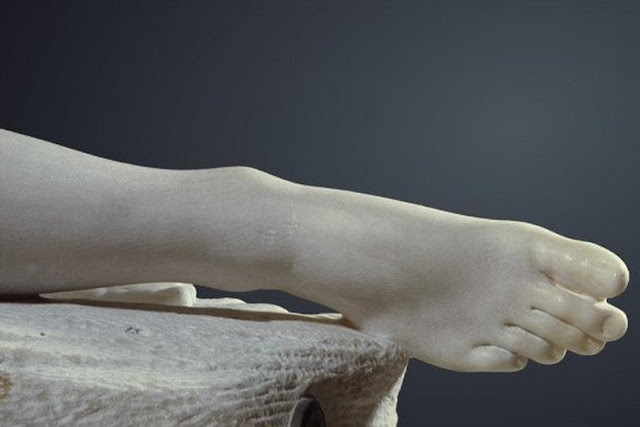Antonio Canova, "Amore e Psiche" - Cupid and Psyche
Cupid and Psyche, artist Antonio Canova (Possagno, Treviso - Italy, born 01.11.1757 - died 13.10.1822) Sculptures.
DISCLAIMER: No copyright infringement intended. All copyrights belong to their respective owners. This album photo is for educational purposes only.
Cupid and Psyche is a sculpture by Antonio Canova between 1788 and 1793, exhibited at the Louvre Museum in Paris. There exists a second version (1800-1803) preserved in the Hermitage in St. Petersburg where the two characters are shown in feet and a third (1796-1800), also exhibited at the Louvre, where the couple is right. Of the three versions, the first, chronologically speaking, is the most popular and critically acclaimed.
Be noted that at the Villa Carlotta in Tremezzo you can see a replica of the sculpture commissioned by Antonio Canova Yussupoff Russian prince (now in the Hermitage Museum of St. Petersburg) performed between 1818 and 1820 by Adam Tadolini, derived from the original model that the same Canova had donated to his favorite pupil Tadolini with permission to draw as many copies they want.
The work represents a subtle and refined eroticism, the god of love with tenderness while contemplating the face of his beloved, reciprocated by Psyche by a sweetness of equal intensity.
The work meets the standards of aesthetics of Winckelmann. The two figures are in fact represented in the act immediately before the kiss, a tense moment, but devoid of emotional upheaval that the act of kissing provoke in the viewer. The gestures and movement also introduces the dimension of time eternalized by the artist in a moment sublime, which remains pending. Even the characters in adolescent bodies and their perfect shapes are idealized according to a principle of absolute beauty and spiritual. The sculptural group is placed, with permission, on a rotating platform, so that the viewer can fully grasp the merits formal. The two figures intersect each other forming an X soft and sinuous results in work that vibrates in space.
The sculpture is made of white marble, polished and finely turned, successfully experimenting with a sense of the flesh, that Canova was to get into their work. The monochrome, in contrast to the dramatic and pictorial Baroque, Neoclassicism, which is a canon of Canova takes to impair the emotional charge.
The work of Cupid and Psyche of 1788 is a masterpiece of balance in research. In this exquisite arabesque, in fact, the two figures are arranged diagonally and divergent. This provision of the pyramid the two bodies is balanced by a mirror triangular shape formed by the outstretched wings of love. Psyche's arms instead frame the focal point, opening up to mo 'circle around the faces. Inside the circle develops a strong emotional tension in which the endless desire of Eros is now close to the strong discharge.
The elegant flowing forms emphasizes the freshness of the two young lovers: it is here represented the idea of beauty of Canova, or the synthesis of natural beauty and ideal beauty.
The scene, taken from the legend of Apuleius, belongs to the mythological allegories of the production of Canova and these roots are common to the group of Apollo and Daphne by Bernini, although it differs from the intentions of the latter (who wished to arouse awe and wonder), Cupid and Psyche in when you feel the tension to perfection and a protest against the classical fiction, artifice and emptiness Baroque virtuosity. However, when the work was exhibited was judged too baroque and Bernini, as was the case for Hebe, criticized because it rested on a cloud.





















































Tidak ada komentar:
Posting Komentar